Pablo Ramírez-Espinosa
Metasurface-based Fluid Antennas: from Electromagnetics to Communications Model
Jul 23, 2025



Abstract:Fluid antenna systems (FASs) have become a popular topic in the wireless community as an effective yet simple means of exploiting spatial diversity. Due to the limitations of physically moving radiating elements, electronically reconfigurable antennas are emerging as practical implementations of FASs, since changing the radiation pattern is functionally equivalent to physically moving the device. However, electronically reconfigurable antennas pose a challenge in terms of analytical modeling, often requiring full-wave simulations or measurements for their characterization; this severely limits the extraction of theoretical insights useful for system design. Motivated by these difficulties and the growing interest in FASs, we propose in this paper a complete analytical model for metasurface-based embodiments of FASs. Specifically, we advocate for the implementation of the FAS concept through dynamic metasurface antennas (DMAs), hitherto proposed as array replacements in multiple-input multiple-output (MIMO) systems. We leverage circuit theory to rewrite the conventional signal model of FASs in terms of admittance matrices accounting for the electromagnetic effects inherent to metasurfaces. The model is validated with full-wave simulations, showing good agreement. We further illustrate how to apply the model for standard performance analysis, and provide closed-form expressions for key metrics, including the resulting signal covariance matrix. Results confirm that practical DMA-based FASs can achieve similar performance to that of idealized implementations of position-flexible antennas.
Energy efficiency of DMAs vs. conventional MIMO: a sensitivity analysis
Jun 10, 2025Abstract:Motivated by the stringent and challenging need for `greener communications' in increasingly power-hungry 5G networks, this paper presents a detailed energy efficiency analysis for three different multi-antenna architectures, namely fully-digital arrays, hybrid arrays, and dynamic metasurface antennas (DMAs). By leveraging a circuital model, which captures mutual coupling, insertion losses, propagation through the waveguides in DMAs and other electromagnetic phenomena, we design a transmit Wiener filter solution for the three systems. We then use these results to analyze the energy efficiency, considering different consumption models and supplied power, and with particular focus on the impact of the physical phenomena. DMAs emerge as an efficient alternative to classical arrays across diverse tested scenarios, most notably under low transmission power, strong coupling, and scalability requirements.
A Tutorial on Fluid Antenna System for 6G Networks: Encompassing Communication Theory, Optimization Methods and Hardware Designs
Jul 03, 2024



Abstract:The advent of the sixth-generation (6G) networks presents another round of revolution for the mobile communication landscape, promising an immersive experience, robust reliability, minimal latency, extreme connectivity, ubiquitous coverage, and capabilities beyond communication, including intelligence and sensing. To achieve these ambitious goals, it is apparent that 6G networks need to incorporate the state-of-the-art technologies. One of the technologies that has garnered rising interest is fluid antenna system (FAS) which represents any software-controllable fluidic, conductive, or dielectric structure capable of dynamically changing its shape and position to reconfigure essential radio-frequency (RF) characteristics. Compared to traditional antenna systems (TASs) with fixed-position radiating elements, the core idea of FAS revolves around the unique flexibility of reconfiguring the radiating elements within a given space. One recent driver of FAS is the recognition of its position-flexibility as a new degree of freedom (dof) to harness diversity and multiplexing gains. In this paper, we provide a comprehensive tutorial, covering channel modeling, signal processing and estimation methods, information-theoretic insights, new multiple access techniques, and hardware designs. Moreover, we delineate the challenges of FAS and explore the potential of using FAS to improve the performance of other contemporary technologies. By providing insights and guidance, this tutorial paper serves to inspire researchers to explore new horizons and fully unleash the potential of FAS.
Performance Evaluation of Dynamic Metasurface Antennas: Impact of Insertion Losses and Coupling
Jun 27, 2022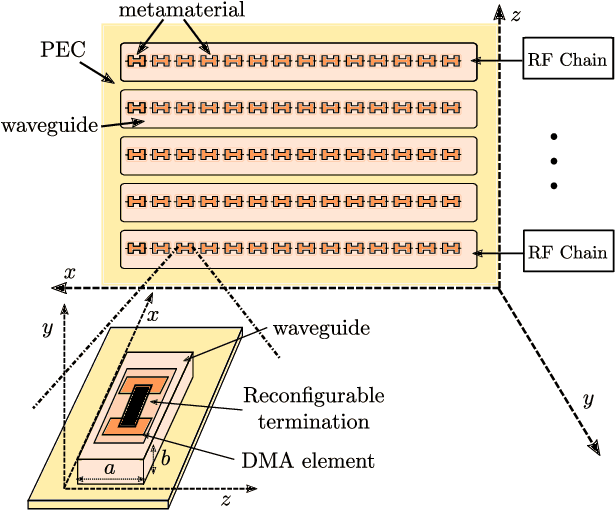
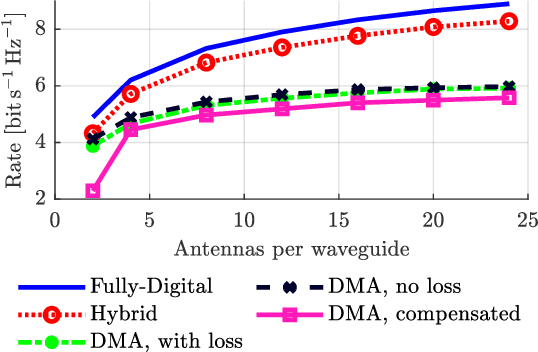
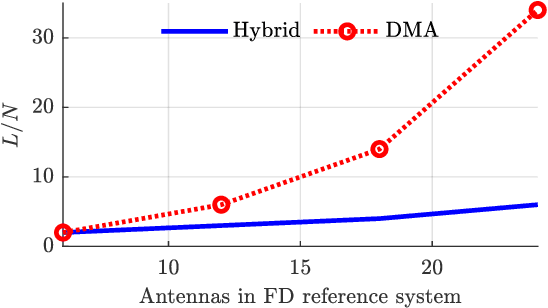
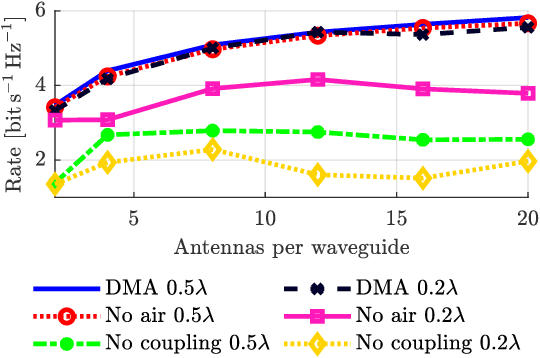
Abstract:This paper evaluates the performance of multi-user massive multiple-input multiple-output (MIMO) systems in which the base station is equipped with a dynamic metasurface antenna (DMA). Due to the physical implementation of DMAs, conventional models widely-used in MIMO are no longer valid, and electromagnetic phenomena such as mutual coupling, insertion losses and reflections inside the waveguides need to be considered. Hence, starting from a recently proposed electromagnetic model for DMAs, we formulate a zero-forcing optimization problem, yielding an unconstrained objective function with known gradient. The performance is compared with that of full-digital and hybrid massive MIMO, focusing on the impact of insertion losses and mutual coupling.
A Primer on the Statistical Relation between Wireless Ultra-Reliability and Location Estimation
Oct 18, 2021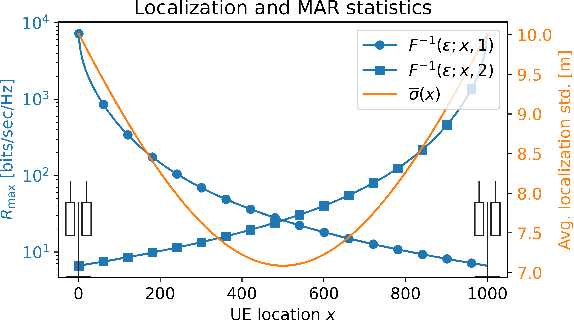
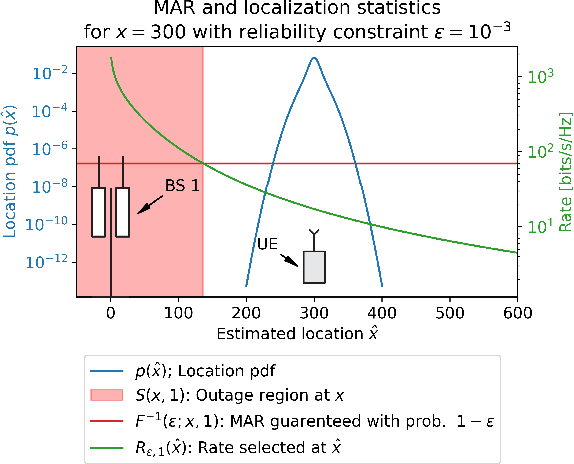
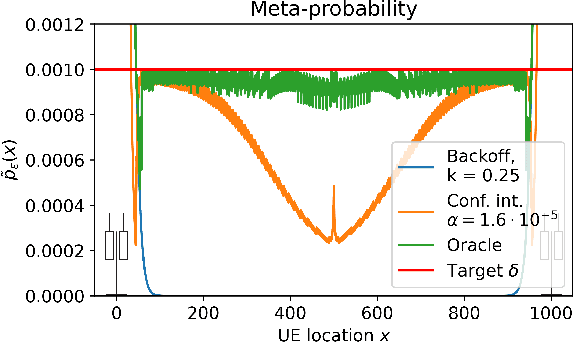
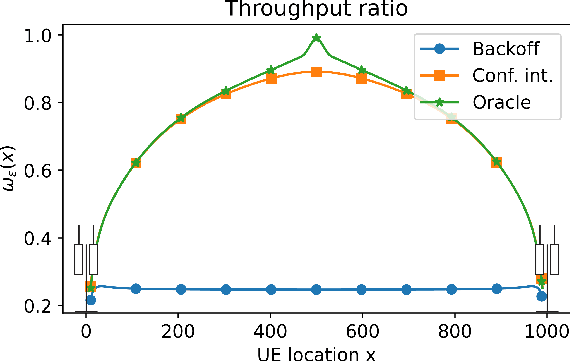
Abstract:This letter statistically characterizes the impact of location estimation uncertainty in the wireless communication reliability, in which location information is used as a proxy to choose the rate. First, a Cram\'er-Rao bound for the localization error is derived. Then, through a simplified setup, we show that the reliability - characterized by how likely the outage probability is to be above a target threshold - can be sensitive to location errors, especially when the channel statistics are also sensitive to the location. Finally, we highlight the difficulty of choosing a rate that both meets target reliability and accounts for the location uncertainty, and that the most direct solutions suffer from being too conservative.
 Add to Chrome
Add to Chrome Add to Firefox
Add to Firefox Add to Edge
Add to Edge